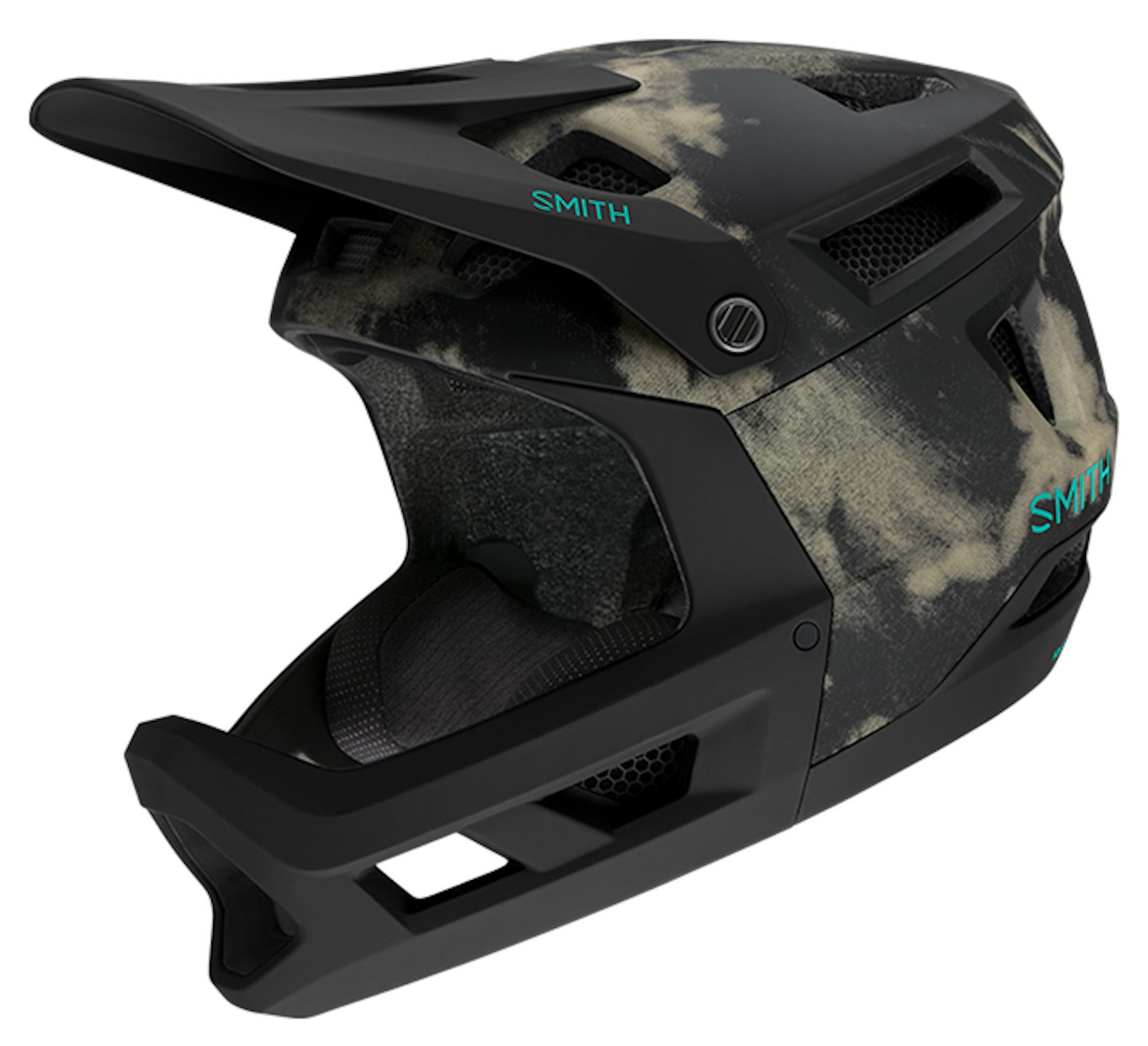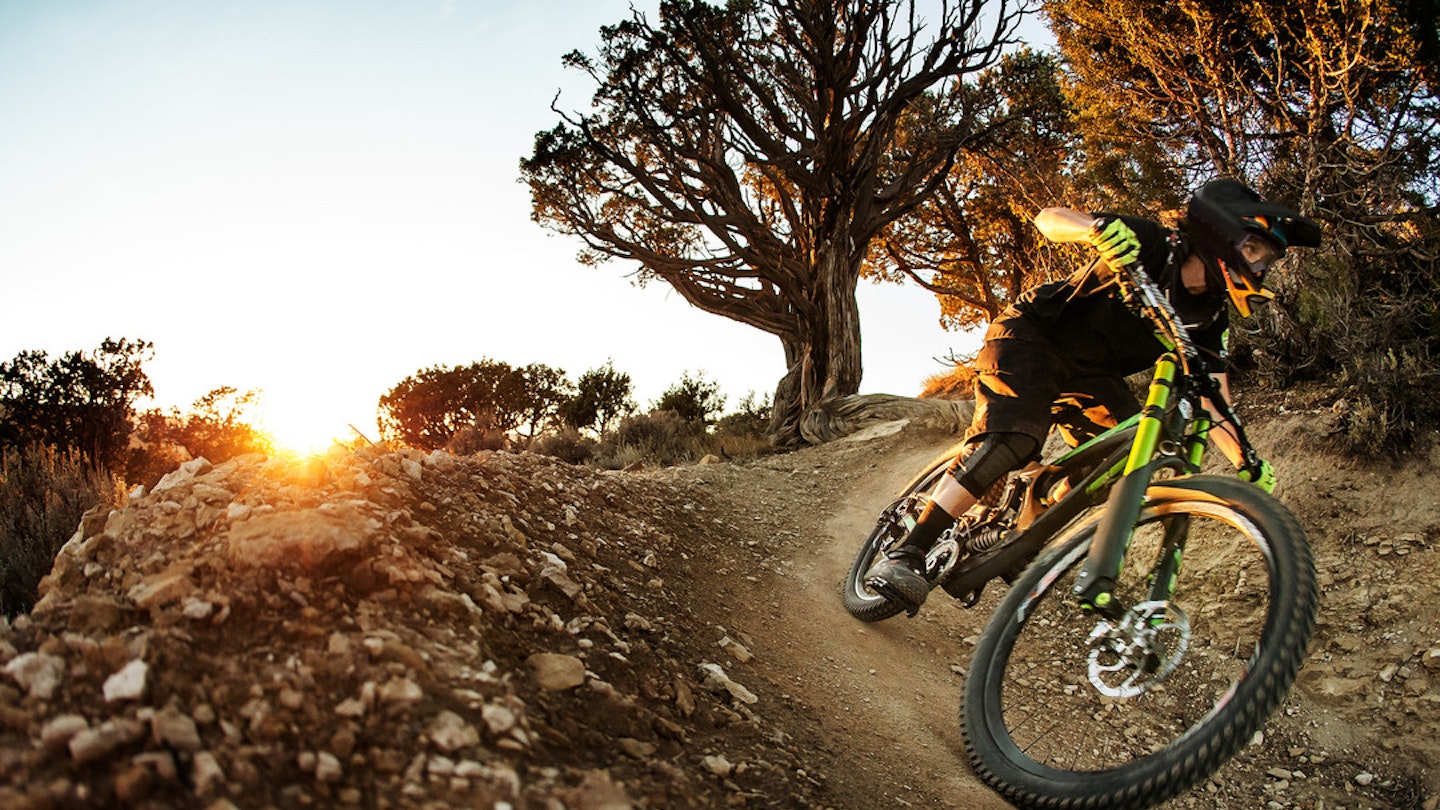Going uphill on a mountain bike, you want something that will be a bit freer and feel the effect of wind flowing through cooling vents, flexible shorts, and reduced weight as you power your way up the climbs. As you start coming down, however, the need for cooling is reduced as speeds are higher, and because of this, the need for protection is greater.
A full-face mountain bike helmet will keep you fully protected on the downhills while offering ventilation to keep you cool on the climbs. If you plan on using the bike lifts to get you to the top of the climb and focus all that energy on nailing the descents, then a full-face helmet is a no-brainer.
There is another option, though – the convertible helmet. These will allow you to unclip the chin strap on the way up and clip it back in place on the way down. This offers you the best of both worlds for your mountain biking weekend - we have a roundup of these coming.
However, with convertibles, you’re designing one thing to be good at two different things. There is often compromise, which means they’re generally a smidge heavier than the full-face option and often, they don’t feel as robust when in full-face mode. Though everything has its place, for this article, let us focus on the actual full-face helmet and enjoy it in all its downhill rad glory.
What to look for in a full-face helmet?
Full-face helmets have come on leaps and bounds in recent years with the rise of Enduro racing; events like the Red Bull Hardline have only increased participation, and now, with Olympic gold medallists in Mountain biking, popularity will only grow. Enduro races used to be long endurance races, hence the name. Now though, the modern version is made up of multiple downhill stages, which are timed to generate the event’s result, while the uphills are ‘liaisons’. This means riders must get to the next stage's start within a set time limit, not contributing to the final result.
When choosing your full-face helmet, you want something which you can breathe through easily, is ventilated so you can keep cool enough on the descent and offers protection from the higher-speed falls that you might get into on the descents.
Usually, when descending, you’ll use either glasses or goggles to help keep stray bits of dirt and mud out of your eyes while offering greater protection against those stray tree branches that can appear from out of nowhere. It is essential to have a helmet that ensures housing for your goggle strap or is compatible with your glasses. Look for these in your helmet choices.
Safety features
A helmet is one of the only things you can wear on a bike that can save your life. The features now being used on road bike helmets are incredible, from crumple zones (similar to what you’d find on a road car) to Multi-directional Impact Protection Systems (MIPS). MIPS attempts to reduce the amount of movement your brain does during impacts, taking the energy out of the impact is what keeps us safe.
The more safety features you have, the cost of the helmet will generally increase; this becomes a balancing act of what you need to keep you safe and what you can afford. Then there is the replacement cost if you have an incident.
What’s the best full-face helmet?
Top Pick

www.chainreactioncycles.com
The lightweight Fox Proframe helmet is worth its price tag if you’re starting to get serious about your downhill pursuits, as it combines open-face breathability with full-face protection. This impressive feat is accomplished using Varizord, an impact absorption tool which uses a dual-density expanded polystyrene liner. This is designed to absorb impact in a much more progressive manner and is also equipped with a MIPS liner.
Large ventilation holes not only in the chain guard but also in the top of the helmet mean maximum ventilation. With no retention device, you get the perfect fit by fiddling with differing pad sizes.
The Fox Proframe is made for use with goggles. While glasses can be used, they can be a bit tight between your face and the helmet.
Pros
- Lightweight (747g in a medium)
- Great colour choices
- Easy on and off with a magnetic buckle
- Great ventilation and breathability
Cons
- No retention device
Editor's Choice

www.sigmasports.com
It may have taken a while for a Specialized full-face helmet to arrive, but the Gambit was well worth the long wait.
The carbon fibre shell of the Gambit surrounds a polycarbonate-reinforced protective layer to offer a decent level of protection. A multi-density foam liner combined with MIPS and slip-plane tech integrated into the padding, all this combined is a considerable effort to reduce the effect of rotational impacts.
Large vents on the chin bar and brow draw in air to keep you cool and prevent goggles from fogging up on rainy days. There’s also space to store the goggles under the peak for when you want that little break. It offers a wide range of adjustments to suit various head shapes.
Pros
- Lightweight (627g in a medium)
- Down Hill certified
- Plenty of adjustment
- Good fit
Cons
- High cost (but it is carbon fibre)
- It can take a while to set the cheek pads in place
Smart buy

www.leisurelakesbikes.com
The Smith Mainline joins a rather illustrious and ever-growing list of low-eight full-face helmets. The Mainline is downhill certified and you can use it in various disciplines.
The Aerocore construction comprises sections of Koroyd, a honeycomb-like crumple zone to absorb impacts, which can be found in some vents. There is also a MIPS liner which is available in three sizes. Even though it’s available in three sizes, there is no adjustable retention strap to fit it to your head; you’ll have to use the pads supplied to give you an excellent snug fit.
Pros
- Lots of safety features built-in
- Comfortable
- Breathable and well ventilated
Cons
- No retention strap
Alternative choice

www.wiggle.co.uk
Offered in three sizes, the Endura MT500 is a full-face helmet with a slightly lower cost. The size can be adjusted with the use of a retention strap and also using different thicknesses of cheek pads.
Utilising the impact-absorbing technology of Koroyd to help reduce any impact on the head during an incident or crash, the MT500 also has some sizeable vents which help keep you cool once you start moving.
It is a little bit narrow in sizing and may give you the face stuck in a lift look if you can’t get the right combination of helmet size and cheek padding, but in all, it performs well in ventilation and breathability for a full-faced lid.
Pros
- Lower in cost compared to others.
- Good ventilation and breathability
- Reputable brand
Cons
- Tight fit
- It might not suit every head shape
- The peak can get in the way while riding
Best budget option

www.decathlon.co.uk
The 7iDP M1 is an affordable helmet for those beginning downhill bike riding.
Yes, you won’t get all the features of the helmets above, but you don’t expect that for the cost; the polycarbonate shell is relatively lightweight, coming in at 890g in medium and mesh-backed vents will let air flow through and keep bugs out. The front opening is nice and large, giving you a big field of vision and allowing you to place Goggles.
The peak is adjustable and even detachable; the padding on the inside is enough to keep the helmet on your head but not quite enough to stop it from rattling once things get a bit rougher.
Pros
- Lightweight
- Well ventilated
Cons
- Not quite enough padding
- Fit could be better
